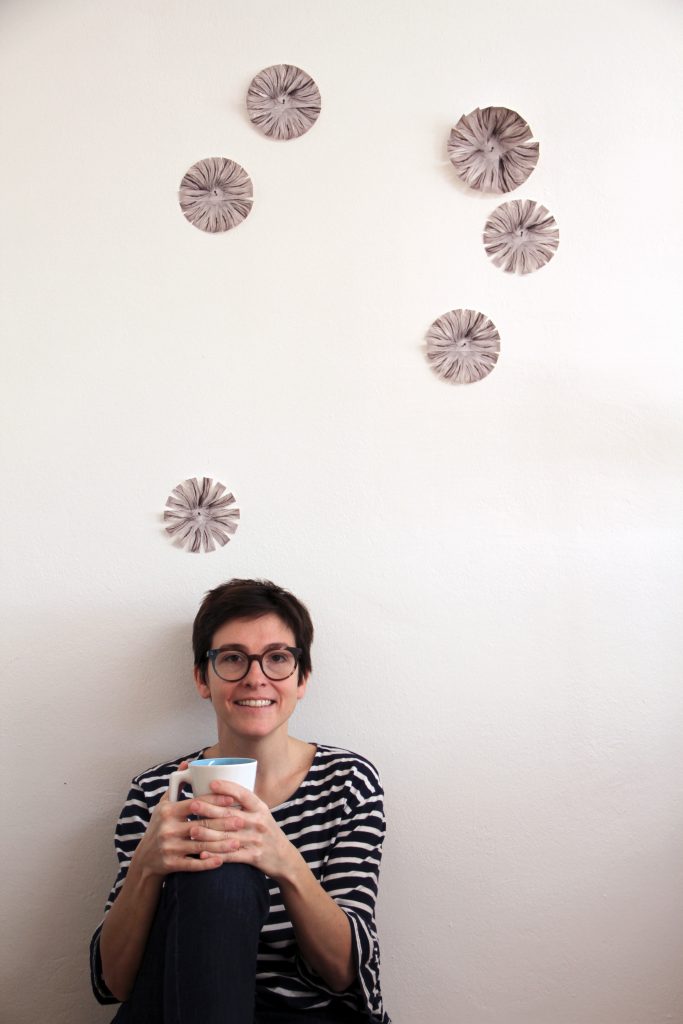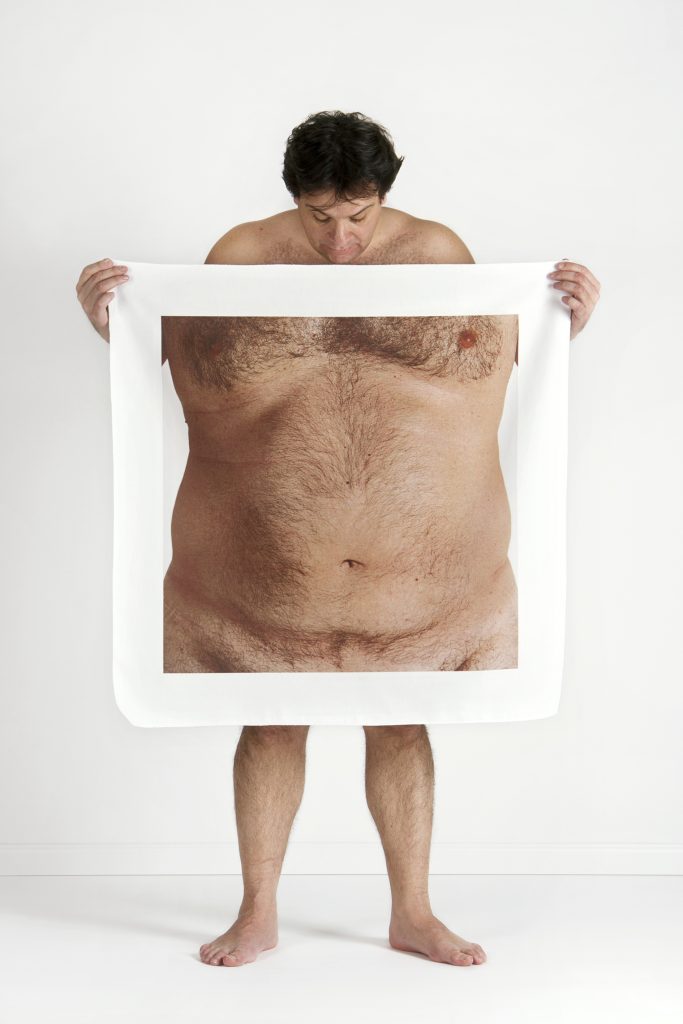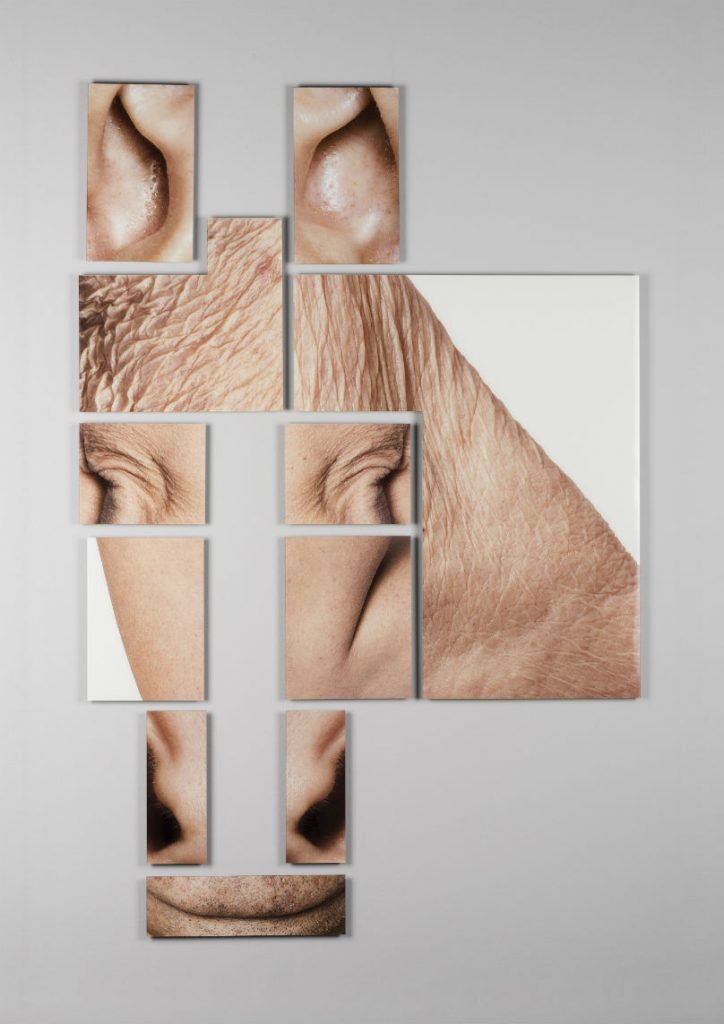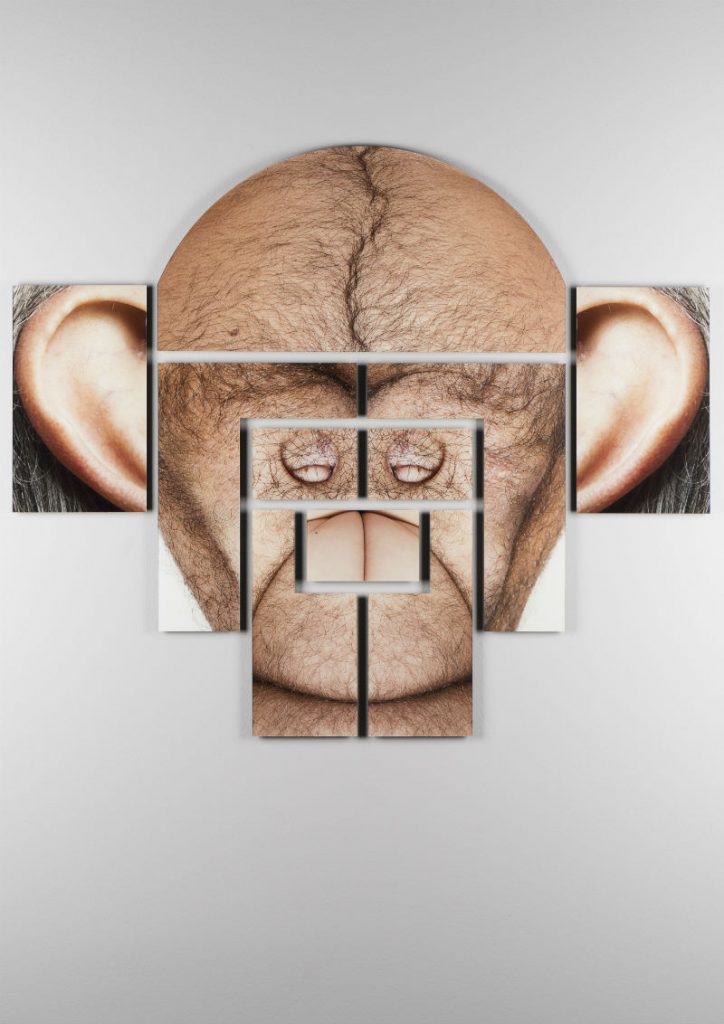Coming from a graphic design background, Meltem Işık uses photography as a tool to question our relationship with photography. In her works she examines the complexity of our bodies to see and to be seen simultaneously by constructing a whole that is other than the sum of its parts.

As we enter her impressively tidy studio in Levent, flower-like images that are nailed on the wall draw attention. Looking under the hood, they are actually photographs of wrinkly eyelids of closed eyes, sliced in strips and nailed on the wall, reminiscent of images of flowers. As much as she is interested in ways of seeing, she also focuses on what people don’t usually notice, such as closed eyes and search for ways to transform them into something else.
She talks about her life spanning art & design, in which each experience cultivated one another. After studying graphic design in Ankara and graduating as the first in her class from the Faculty of Visual Arts at Bilkent University, Işık arrives in Istanbul starting her career working as a designer at a well-known advertising agency, McCann Erickson in 1998.
After working there for two years, sitting 7/24 in front of a computer, she comes to the realization that she wants to design and create objects by using her hands. Later she moves to New York with her partner, who is now her husband and starts a new chapter that shapes her as an “independent individual.”
Following her decision, she starts her associate’s degree on jewelry design on scholarship at the Fashion Institute of Technology. Then, she works as an apprentice with a jeweler for two years and begins to sell her pieces at Julie Artisans’ Gallery in New York.
After 9/11, she goes back to graphic design. She luckily finds the opportunity that will inspire her future as a visual artist at the Brooklyn Museum.
“I was working side by side with curators, artists, editors. All the work related to making of an exhibition in terms of design, carpentry or painting was being produced in-house. Working there, made me realize that I want to be involved in arts by actually making art.”

After working at the Brooklyn Museum for four years, she continued working at 92nd Street Y, a nonprofit cultural center located at the corner of East 92nd Street and Lexington Avenue. She mentions how lucky she was to work at the heart of the art & culture scene. She seized every opportunity to attend to the classes and events it offered, such as a drumming course at a lunch break, contemporary dance class after work or a talk with Paul Simon in the weekend. “There was a specific moment which my attitude towards art shifted from ‘I really like it’ to ‘I can do this’. When you believe that you can do it, eventually you get there.”
Işık and her husband came back to Istanbul in 2008 and she started the graduate program in Visual Arts at Sabancı University with the encouragement of Erdağ Aksel, her professor from Bilkent University. She speaks of him as an inspirational professor and mentor, as well as a dear friend who encouraged her to take the road towards art. “Whilst spending most of my time in the metal and wood studios, I found out that you can ask the same question and come up with hundreds of different approaches to it.
“There weren’t any courses teaching specific technical skills on sculpture at Sabancı University. In the beginning, learning something without that kind of guidance was very difficult for me, but in time it led me to discover my own way of thinking and to construct different approaches to my questions. Surrendering to my skills, my experiences and my passions was a significant awakening.”
Talking about one of her first sculptures, Pending which was exhibited at Siemens Sanat in 2011, “Personal space was an important issue for me. As a person who is fond of her independence, I felt like my personal space had shrunk as I walked out in the airport in Istanbul. Not necessarily criticizing it, I’ve become more aware of its elasticity.” Starting out with the idea of personal space, she talks about the making of Pending.
“I was working with spandex to make three dimensional objects that can both shrink and expand. I stretched spandex fabric over a 1m x 1m cube made of a wood structure and covered it with layers of liquid latex. The cube had an extension like a long elephant trunk, which I attached to a leaf blower. Every time air was tumultuously blown from the trunk, the cube was rising up from the floor as the cube swelled. In a way, it was making an abstract reference to a body. It seemed like it was breathing. It was pushing its limits.” She associates Pending to a boa constrictor digesting an elephant in The Little Prince. “It may bring different things to mind because it is free from the necessity of being one thing. It may be a body or a space, maybe a soul. It is pending.”

As she gets more involved with photography, she works on the project Twice into the Stream that is named after the words of Heraclitus referring to how constant change define our experiences. The works in the series also make references to performance and sculpture especially in the making process. The series Twice into the Stream was exhibited at Gallery Nev in 2012.
She explains how the initial idea came out when she saw how her husband look at an enlarged photographic print of his own belly. It was printed on latex covered fabric for a different sculpture. “I believe if there’s any kind of magic it’s in the random, mundane things. I’m more interested in turning what is ordinary into art, drawing attention to what we don’t pay attention to, creating new meanings.”
In Twice into the Stream she manages to recreate that specific scene, a man trying to see himself through his photograph. The bodies are photographed as they see and as they are trying to be seen.
She expresses her problematic relationship with photography. “One can never fully see herself without the help of external devices. There is a struggle in the way we see ourselves with the naked eye and the way we see ourselves through photography. There’s an of outsider’s gaze that we’re unfamiliar with. We can never manage to see ourselves the way someone else sees us. That’s why we have a kind of dependence on photography and we need it to reflect the gaze of an outsider although we know it can be manipulated. There is no alternative to see ourselves from outside, other than through photography that gives us a permanent image unlike the mirror.” Through this series she offers an alternative reading to this complex relationship.
She highlights the importance of ‘process’ that is made up of several steps. She meets with her models who are close friends and relatives and takes photographs of their body parts and full-length poses, looking at a blank piece of cloth that covers a part of their body. Later she examines the relationship between the whole and the details in Photoshop, that is used as a tool for her decision making, but not in the final image. Afterwards she meets with her models again, taking pictures of them this time with a piece of cloth that has an actual detail of a body part printed on it.

Going back to her interest in personal space, she also plays with the idea of personal space, bringing the personal space of her models into the public space.
Meltem Işık defines her process to setting a game. “Art and play are closely related to each other. I like having the option to surprise myself. Instead of making all the rules by myself, throughout the making of this series, I learned to enjoy the ride and to make decisions related to light, posing, discovering new forms, getting inside the very moment of the photo shoot, accompanied by the participation of the models. It was a push and pull, controlling and handing over the reins at the same time. I just set up the initial framework of the game and tried to avoid dictating anything. The only rule for the models was to look at a part of their own image printed on a piece of cloth. The rest came out of the mutual agreement on the game.”
There’s wittiness in her works that make the viewers tickle. “Art doesn’t necessarily have to frown, even if it’s speaking of something serious.”
Her second exhibition Suspicious Affinities took place at Gallery Nev in 2015. In this series, she investigates another function of perception, playing with our tendency to see “what we already know” in things we look at, to look for familiar faces.
She mentions photography’s role in constructing reality and memory in her life. “I remember looking at shelves full of neatly organized photo albums my dad made when I was little. It is questionable whether I remember all of these memories because I looked at the printed proofs of their existence so many times, or because I actually lived those moments in the past. In a similar way, today we digitally build our identities and memories through our instagram accounts or photo galleries on our mobile phones according to how we want to remember and be remembered.”
Looking back onto her life as a designer & an artist, despite taking various routes, it seems that she succeeded in connecting the dots of her life. She talks about how liberating changing your mind can be. “I learnt to embrace my own diversity. You don’t have to be exactly clear about what you want to do with your life. People are like vessels. You pour down your experiences over time into the same vessel. They accumulate into one person that makes you, You.”
Işık doesn’t label herself as a photographer. She believes “Coming from a different background and training allows me to approach it through different perspectives.”
Since 2016 she is working on her PhD in the Design, Technology and Society program at Özyeğin University while teaching in the Visual Arts and Visual Communication Design Department, at Sabancı University. Currently, selected works from her series “Twice into the stream” are exhibited as part of a group exhibition A Room of One’s Own, along with the works of Cansu Yıldıran, Charlotte Schmitz and Tahmineh Monzavi at Leica Gallery, until May 5.
All images courtesy of the organizer & Yonca Keremoğlu.









